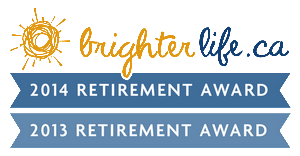At a workshop I was doing recently I was asked a
question, “is pneumonia contagious” I thought it was but I was not sure, but I
had pneumonia a few times in my life and so I am concerned about this
infectious disease.
In 2014 the number of visits to emergency departments
with pneumonia as the primary hospital discharge diagnosis was 423,000 and 50,622
died of this infection. The deaths per 100,000 population in 2014 was 15.9,
which is high. Source: https://www.cdc.gov/nchs/fastats/pneumonia.htm
Despite this, around two-thirds of older adults do not
get the recommended pneumococcal pneumonia vaccination to prevent pneumonia.
Pneumonia can be prevented, particularly in people who
do not have chronic lung diseases. By avoiding sick people, staying home when
ill, washing hands, and adopting basic health measures, such as getting vaccinated,
it is possible to prevent this potentially fatal illness.
Back to the question Is pneumonia contagious? Pneumonia
refers to an infection in the lungs caused by certain germs, such as bacteria
or viruses. When one-person spreads germs that can cause pneumonia to someone
else, the recipient can develop a range of respiratory infections, from mild
cold symptoms to pneumonia. The problem is that there are a range of factors that
determine whether pneumonia is contagious:
Most cases of pneumonia are due to the spread of
bacteria and viruses. Bacteria are living organisms that respond to
antibiotics. Viruses are tiny strands of protein and genetic material that
cannot be treated with antibiotics. Both viruses and bacteria are contagious.
Pneumonia often develops after a person has had a
different infection, such as a head cold. This makes a person more vulnerable
to other types of infections. An infection that develops in the lungs is called
pneumonia.
Some organisms are more likely to cause pneumonia than
others. One common example is pneumococcal disease, a bacterial infection that
can cause ear infections, sinus infections, infections of the brain and blood,
and pneumonia.
Another type of bacteria called Mycoplasma pneumoniae
can cause other forms of pneumonia. Mycoplasma bacteria are also contagious.
The influenza virus or the flu is a common cause of
viral pneumonia. The virus spreads easily from person to person, causing a
range of symptoms and conditions.
Some causes of pneumonia that can be caused by inhaling
food particles or contents from the intestinal tract, some fungi are not
contagious.
In most cases, infections are contagious for a few
days before symptoms appear and for a few days after. The exact length of time
a person is contagious depends on the type of microorganism causing the
infection.
Some forms of pneumonia, such as pneumonia caused by
mycoplasma, remain contagious for several weeks. If a person has pneumonia,
they should speak to a doctor about how long the infection will be contagious.
Although anyone can get pneumonia, some people are at
greater risk. Pneumonia occurs when an infection develops within the lungs. It
can cause complications with breathing and spread to other parts of the body
such as the bloodstream.
People who are more likely to get pneumonia include:
very young children and babies whose immune systems
are not fully developed
·
older people with
weakened immune systems
·
pregnant women
·
people taking
medications that suppress the immune system
·
people with diseases
that weaken the immune system, such as cancer, HIV, and AIDS
·
people with autoimmune
diseases, such as rheumatoid arthritis
·
people with lung and
respiratory conditions, such as chronic obstructive pulmonary disease (COPD),
cystic fibrosis (CF), and asthma
·
People at risk of
pneumonia need to be especially cautious around people who have recently had
pneumonia or another respiratory infection.
Pneumonia is transmitted when germs from the body of
someone with pneumonia spread to another person. This can happen in a variety
of ways, including:
Inhaling the infection. This can occur when a person
with pneumonia coughs or sneezes and another person inhales the infected
particles. This is more likely between people in close contact with each other,
such as parents and children, or in poorly ventilated spaces, such as airplanes.
Through the mouth or eyes. This can happen when a
person touches a surface that an infected person has coughed or sneezed on.
When a person with an infection coughs into their hand and then shakes another
person's hand, the second person can become infected if they touch their mouth
or eyes without washing their hands.
Food particles and irritants from the intestinal tract
can also cause pneumonia. This is called aspiration pneumonia and can occur
when a person accidentally inhales these substances.
Aspiration pneumonia usually happens in people who
have trouble swallowing, such as someone having a diagnosis of a stroke or
other central nervous system conditions, such as Parkinson's disease.
Fungal pneumonia typically develops when people inhale
microscopic particles of fungus from the environment. People with weakened
immune systems are more likely to develop this type of pneumonia.
Most people recover from pneumonia without any lasting
effects. In vulnerable people, pneumonia can be fatal. Worldwide, pneumonia
accounts for 16 percent of deaths in children under 5. Older people and those
with a weakened immune system are also more likely to experience serious
complications.
Older people, people with serious illnesses, parents
of newborns, and caregivers to sick people should make sure all visitors wash
their hands. It is best that people with symptoms of a respiratory illness or
fever do not visit a vulnerable person until their symptoms are gone. Other
strategies that can reduce the risk include:
·
washing hands before
eating, after touching people, and after going out in public
·
disinfecting all
surfaces in the home, particularly if someone has recently been sick
·
keeping up-to-date on
all vaccinations, especially any household members around infants who are too
young to be vaccinated
·
avoiding locations with
inadequate air filtration during cold and flu season

